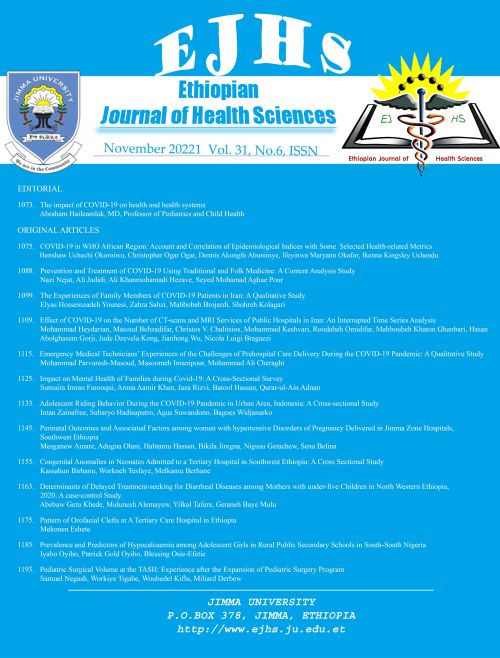Main Article Content
Effect of COVID-19 on the Number of CT-scans and MRI Services of Public Hospitals in Iran: An Interrupted Time Series Analysis
Abstract
BACKGROUND፡ In February 2020, the Ministry of Health and Medical Education in Iran announced the first case of COVID-19. The aim of this study was to investigate the impact of COVID-19 on the number of CT-Scans and MRI services in public hospitals in western Iran.
METHODS: We collected CT-scans and MRI services data from 18 public hospitals via Vice-Chancellor Office, Lorestan University of Medical Sciences from January 2017 to February 2021. Interrupted time series analysis (ITSA) was conducted to assess the impact of COVID-19 on CT-Scans and MRI services. More specifically, ITSA was conducted using ordinary least squares regression with the number of CT-Scans and MRI services per 1,000 registered persons per month as dependent variable.
RESULTS: At the beginning of the observation period, the monthly rate of CT-Scans was constant (p for trend = 0.267) at 291.9 (from 95%CI 240.5 to 343.4) per 1,000 registered patients. The first case of COVID-19 coincided with an abrupt increase by 211.8 (from 95%CI 102.9 to 320.7) per 1,000 patients. Thereafter, the trend of CT-Scans did not change (p=0.576) compared to the pre-pandemic period. The rate of MRI services was 363.5 per 1,000 per registered patients per month (P = <0.0001) with a slightly decreasing trend (coefficient=-5; 95%CI, -6.9 to -3.1).
CONCLUSION: The findings of this study showed that crises such as COVID-19 can affect the service delivery process. Health policymakers and decision makers should work to prevent potential reductions in health care during events such as COVID-19.






